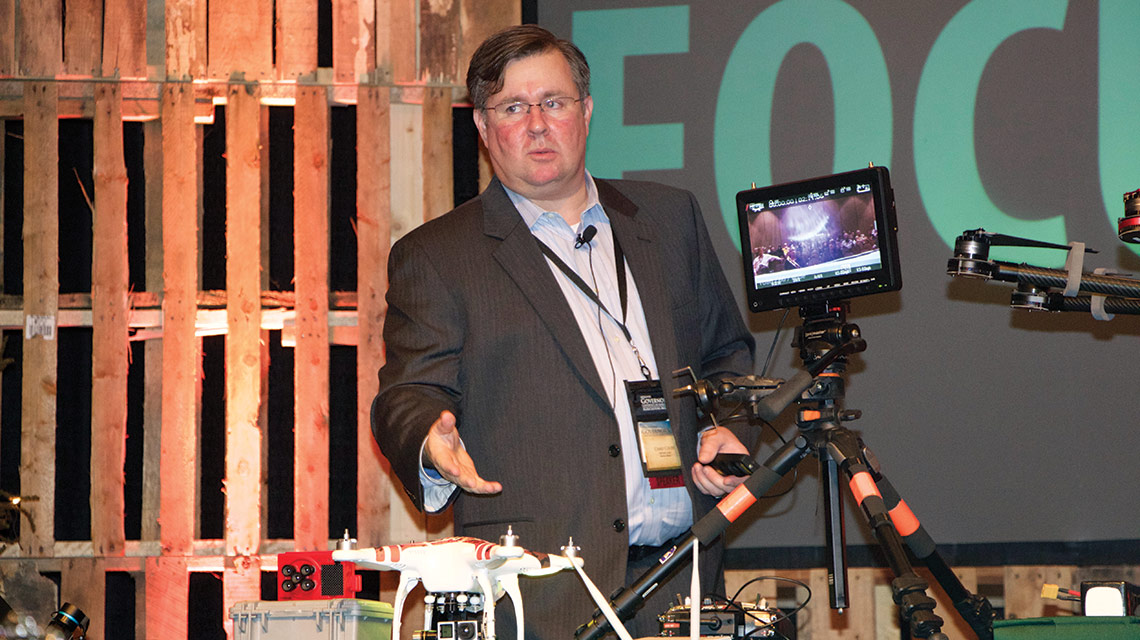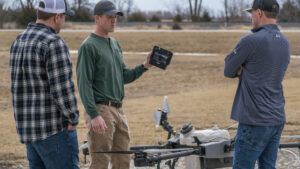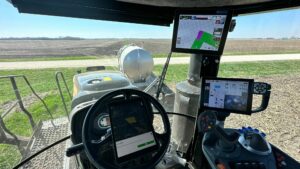Unmanned aerial vehicles might change the face of the seed industry for farmers.
Seed companies across the country are trying to figure out if and how unmanned aerial vehicles or drones can fit into their research programs, as well as a part of their portfolio of services they offer to farmers.
Drones have a long history, says Chad Colby who provides product support at 360 Yield Center — a consulting firm that finds and develops new farming methods and technologies to capture more yield for farmers. “NASA has had some of this equipment since the 1990s, so these ships are not new,” he explains. “What is changing is the time in which we can get our data. We can get these images and transfer them much faster.”
Colby is also a licensed pilot and a drone enthusiast. He has several different models to show off and demonstrate for farmers and interested companies.
“Did you know that one out of three active pieces of our air force is unmanned?” he asks. “That’s a big deal. One of the bigger challenges that we face here in the United States is public opinion.”
Colby has conducted more than 1,500 drone flights during the past two years. “And I’ve never lost a ship,” he says, noting that it’s important to play by the rules. “The FAA or Federal Aviation Administration – they have a little bit of an issue with anything that happens in the air. People need to use common sense with this technology.”
Title 49 of United States Code basically means that the FAA is responsible for regulation and safety of national airspace. “Safety is the FAA’s No. 1 responsibility,” Colby says. “The challenge for most of us is that we take our airspace for granted. It’s the safest in the world.”
Colby says that there are some bad players out there who have given this technology a bad reputation. However, he believes there are a lot of really good things this technology can do, especially in agriculture. “This is a game changing technology,” Colby says. “It can help with timely decision-making; one of the biggest challenges on farms today is time. It can help with data collection, and it allows farmers to closely monitor the health of plants and livestock.
“Drones also have the potential to deliver a cost savings to farmers because of the ability to use inputs when needed with great precision.”
However, in the United States today, “you can not pay someone to do something with UAVs,” Colby says. “Be very careful right now — there are consequences or repercussions for operating in an illegal manner.”
But he also cautions, “don’t let this technology pass you by.” Colby encourages individuals within the seed industry to get involved with it. “The technology is such that you can use it, but you also need to understand the responsibility that comes with it,” he says.
In selecting a drone to experiment with, “it’s all about your mission,” Colby says, noting that many models can accomplish the same thing but come at different price points. For instance, Ag Eagle, based out of Kansas, is a platform that Colby really likes and so is Trimble’s ship — the UX5, which is about $50,000.
“It’s a great ship, but it’s $50,000. I can do the same thing with a few thousand dollars,” he says. “It’s important to do your research and know what’s out there.”
Colby says commercial applications exist, but the sensors need to get good enough to identify pests and diseases. “That’s what is going to really develop over the next couple of years,” he says. “2015 is pushing the boundaries.”













